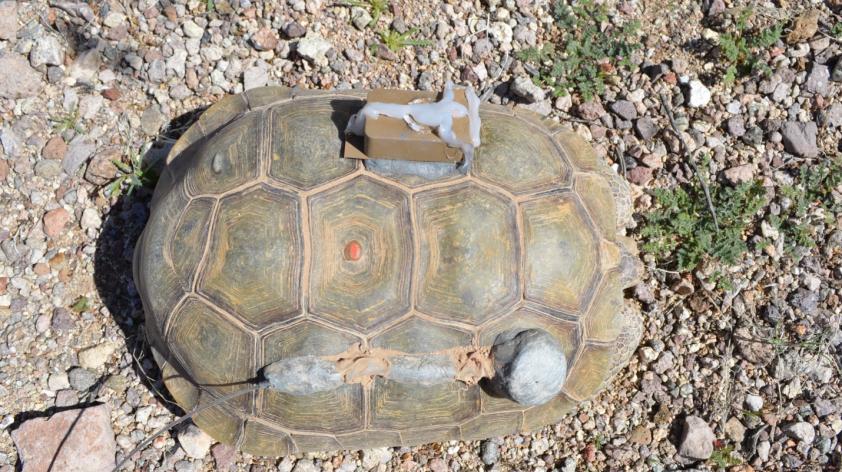
And I Would Walk 500 Miles
Tracking desert tortoises in the Mojave Desert just outside Las Vegas, Nevada is what the San Diego Zoo Global’s desert tortoise research team does on a weekly basis. The team releases captive tortoises into the wild at select sites and uses radio telemetry tracking to monitor the animals. As development in the Mojave Desert is inevitable, translocation research helps to prioritize conservation of desert tortoise habitat and boost wild populations.
Adult desert tortoises can move long distances when searching for mates, shelter or food. Tracking a tortoise once a week can barely paint a full picture of what the tortoise does on a daily basis. Figure 1 (slide show below) shows the tracking points from 2015 for adult female tortoise number 3108. When a tortoise is tracked, the field technician records the animal’s position and observational data. Sometimes a tortoise will move a few miles in between trackings and the route it took to its new location is unrecorded.
With recent technology, biologists have begun to fill this gap and record the path the tortoise takes on a daily basis. Does he wake up and go for coffee? Does he decide to sleep all day? Tortoises typically forage in the mornings and escape the hot desert temperatures during the day in a burrow.
To determine a tortoise’s daily movement patterns, the team affixes GPS data loggers to the tortoise’s shell (see photo). GPS data loggers record the animal’s location every 30 minutes. Figure 2 (slide show below) shows the track recorded by a GPS logger for the same tortoise. Clearly, the tortoise takes daily journeys we were not aware of. The large black clumps are where the animal spends most of its time resting in a burrow.
Using radio telemetry tracking and GPS data loggers, along with observational data and field cameras, the research team has been studying adult tortoise behaviors and movement patterns for the past four years. The team hopes to answer important questions about translocations and the implications they can have on the animals post-release when the study comes to an end next month.













